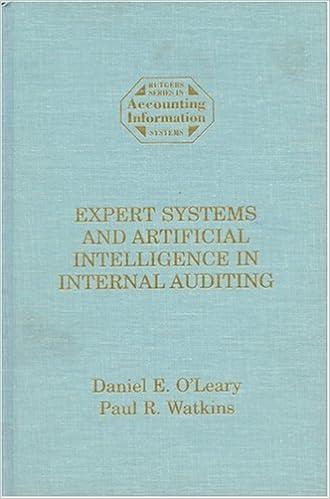Question
Seven metrics The following data were taken from the financial statements of Woodwork Enterprises Inc. for the current fiscal year. Assuming that there are no
-
Seven metrics
The following data were taken from the financial statements of Woodwork Enterprises Inc. for the current fiscal year. Assuming that there are no intangible assets.
Property, plant, and equipment (net) $1,806,400 Liabilities: Current liabilities $227,000 Mortgage note payable, 10%, ten-year note issued two years ago 1,129,000 Total liabilities $1,356,000 Stockholders' equity: Preferred $2 stock, $100 par (no change during year) $2,034,000 Common stock, $10 par (no change during year) 2,034,000 Retained earnings: Balance, beginning of year $2,170,000 Net income 641,000 $2,811,000 Preferred dividends $40,680 Common dividends 58,320 99,000 Balance, end of year 2,712,000 Total stockholders' equity $6,780,000 Sales $20,095,400 Interest expense $160,182 Beginning-of-the-year amounts: Property, plant, and equipment (net) $ 4,068,000 Total assets 7,729,000 Retained earnings 2,170,000 Determine the following: (a) debt ratio, (b) ratio of fixed assets to long-term liabilities, (c) ratio of liabilities to stockholders equity, (d) asset turnover, (e) return on total assets, (f) return on stockholders equity, and (g) return on common stockholders' equity. Round to two decimal places.
a. Debt ratio % b. Ratio of fixed assets to long-term liabilities c. Ratio of liabilities to stockholders equity d. Asset turnover e. Return on total assets % f. Return on stockholders equity % g. Return on common stockholders equity % Feedback
(a) Divide total liabilities by total assets. Use the accounting equation to find total assets i.e., Total Assets = Total liabilities + Total Stockholders Equity
(b) Divide property, plant and equipment (net) by long-term liabilities.
(c) Divide total liabilities by total stockholders equity.
(d) Divide net sales by average total assets, excluding long-term investments. Average Total Assets = (Beginning Total Assets + Ending Total Assets) 2 To find ending total assets, use the accounting equation and substitute ending liabilities + stockholders equity for the amount.
(e) Divide the sum of net income plus interest expense by average total assets. Average Total Assets = (Beginning Total Assets + Ending Total Assets) 2 To find ending total assets, use the accounting equation and substitute ending liabilities + stockholders equity for the amount.
(f) Divide net income by average stockholders equity. Average Total StockholdersEquity = (Beginning StockholdersEquity + Ending StockholdersEquity) 2
(g) Divide net income minus preferred dividends by average common stockholders equity. Common stockholders equity = Common stock + Retained earnings Average common stockholders equity = (Beginning common stockholders equity + Ending common stockholders equity) 2
Check My Work
Step by Step Solution
There are 3 Steps involved in it
Step: 1

Get Instant Access to Expert-Tailored Solutions
See step-by-step solutions with expert insights and AI powered tools for academic success
Step: 2

Step: 3

Ace Your Homework with AI
Get the answers you need in no time with our AI-driven, step-by-step assistance
Get Started


